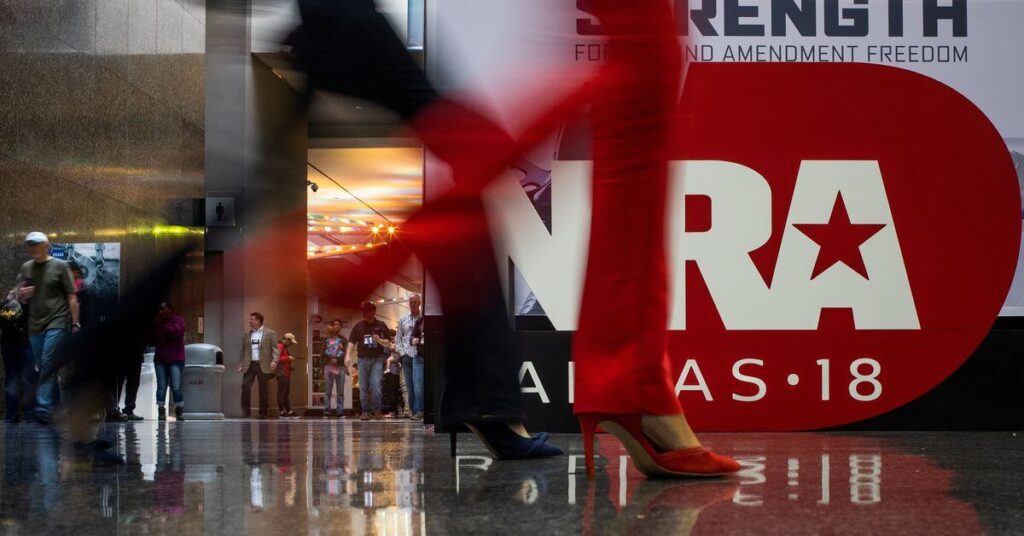The composition of arbitrators in the United States reveals a notable lack of diversity, with a significant majority being Caucasian and male. This imbalance is prominent in the demographics of arbitrators at major arbitration institutions like the American Arbitration Association (AAA) and JAMS, where figures show white arbitrators make up 88% and males account for 77% of the total. When evaluating these statistics against the United States population, where nearly 40% of individuals identify as Black, Indigenous, and people of color (BIPOC) and women represent 51%, the contrast is stark.
The effects of this disproportion become particularly relevant in cases of arbitration involving minority groups and women. These groups are not only more frequently subjected to arbitration agreements but also face a reduced likelihood of having their cases heard before a diverse panel. Arbitration outcomes have been observed to differ by the gender of the arbitrator, with female arbitrators reportedly ruling more often in favor of consumers and employees compared to their male counterparts.
A notable instance highlighting the lack of diversity occurred in a legal dispute between musician Jay-Z and the clothing company Iconix. The initial absence of any Black arbitrators on the offered panel prompted a request for more inclusive representation, which led to the inclusion of a limited number of minority arbitrators, with only a few being Black, and one having a direct connection to the opposing legal firm.
Another example involved a leaked email. The NRA sued JAMS and Winston & Strawn after revelations that the arbitrator overseeing the confidential proceeding had forwarded a racist email to a group of recipients that included an outside lawyer for the NRA and a purported friend at Winston. The gun rights group said JAMS failed to vet the then-arbitrator, retired Cook County Superior Court judge Richard Neville, who was overseeing the dispute, and therefore had no claim to arbitral immunity.
The prevalence of such scenarios underscores the broader conversation surrounding equal representation in arbitration. Despite a push over the years for diversification in both federal and state judiciaries, arbitration panels have lagged significantly behind in reflecting societal demographics.
The broader consequences for individuals bound by forced arbitration agreements are significant. Often, these agreements eliminate the possibility of trial by jury, leaving individuals, especially from minority backgrounds, with arbitrators who may not understand or represent their perspectives. The improbability of winning a monetary award in arbitration is already noteworthy; however, for BIPOC and women, the presence of such an imbalance in arbitrator demographics can further decrease their chances of a favorable ruling.
In a recent dispute involving an employee of Tesla, the arbitration by a Caucasian arbitrator resulted in a ruling that downplayed severe racial slurs as being analogous to the content found in rap music, despite factual evidence and an apology from the CEO for the reported misconduct. This decision reflects the broader implications of having an arbitrator panel lacking diversity and the potential for bias in their rulings.
The necessity for a shift towards greater diversity among arbitrators is apparent. Such change would aim to afford fairer and more representative adjudication, thereby strengthening the overall trust and effectiveness of the arbitration process.
Impacts of Mandatory Arbitration on Women and Ethnic Minorities
Forced arbitration clauses in employment contracts disproportionately affect women and ethnic minorities. A significant number of employees, estimated at 60 million, are bound by such clauses, often without their knowledge. However, not all sectors experience this uniformly. While construction, a male-dominant sector, shows a relatively low incidence of forced arbitration, fields like health and education, with higher concentrations of female workers, report the highest instances.
Economic Consideration:
- Lower-income employees are more frequently subjected to forced arbitration.
- Disparities in earnings contribute to the vulnerability of women and minorities.
Evident Pay Discrepancies:
- Ethnic minority men earn approximately 87% of what their white male counterparts make.
- Women earn about 82% of what men do across various sectors.
These discrepancies not only reflect in their representation within forced arbitration but also in the earnings between different demographic groups. Consequently, women and minorities often find themselves in dispute resolution processes that lack a diverse representation of their peers, further compounding the issue of equitable treatment within workplace conflict resolution.
Workplace Harassment in Arbitration Environments
Sexual harassment in the workplace remains a critical issue, exacerbated by the common practice of mandatory arbitration, which tends to favor confidentiality over transparency. This private form of dispute resolution often involves predominantly male arbitrators who mandate individual resolution of complaints, preventing collective action akin to class lawsuits. Such isolating mechanisms hinder the efforts of individuals, predominantly women, to challenge systemic harassment, allowing such behavior to persist unchecked.
Notable incidents exposing this issue have been brought to light by courageous figures. For example, a former national television anchor was retaliated against after reporting harassment, yet by speaking out, she encouraged others to voice their experiences with high-profile personalities in the media industry.
Recognized differences exist between the outcomes of arbitration cases handled by male and female arbitrators. Statistics from a well-known arbitration association from 2016 to 2020 show a stark contrast: the most frequently utilized male arbitrators ruled in favor of employees’ monetary claims only a fraction of the time. Their female counterparts not only ruled slightly more often in favor of employees but also awarded higher damages on average.
Key Findings:
- Secrecy and Individualism: Mandatory arbitration often requires individual rather than collective action.
- Influence of Gender on Arbitration: Male arbitrators award less often and in lower amounts compared to female arbitrators.
- Impact of Speaking Out: Publicly challenging harassment encourages others to come forward.
For arbitration to serve as an equitable means of justice, reforms are necessary to ensure it does not become a mechanism for silencing those who seek redress for workplace harassment and discrimination.
Diversity Gaps in Representation by Age and Orientation
Within arbitration organizations, a significant gap persists in representation concerning both age and sexual orientation demographics. Data indicates a stark contrast with only 2% of arbitrators self-identifying as part of the LGBTQ community, while nationally, LGBTQ individuals constitute a higher percentage.
Moreover, there is a notable age imbalance in the sector, with arbitrators predominantly from senior age brackets. This is a consequence of the common practice that arbitrators typically enter the field following extensive legal careers. Specific figures from arbitration institutions confirm this trend:
- FINRA, a notable arbitration provider, reports that 75% of its arbitrators are aged 60 or more, with nearly half being over 70.
- Within the same institution, there’s a pronounced lean towards male and white arbitrators, with figures highlighting that 70% are male and 80% are white.
This information points to a broader issue of homogeneity that is colloquially captured by the phrase—often used to describe the arbitration community—”pale, male, and stale.” The data underlines the necessity for more inclusive practices that better reflect the diverse makeup of society at large.
Limited Representation of Minority and Female Arbitrators
Underrepresentation in Arbitration: The arbitral community often mirrors the broader legal sector’s demographic discrepancies, particularly within large corporate law firms from which arbitrators are frequently chosen. Consequently, individuals from diverse backgrounds, including minorities and women, rarely ascend to the role of arbitrator. Recruitment from more representative legal areas, such as civil rights law, remains an underutilized strategy.
- Obstacles in Career Advancement: Minority arbitrators confront significant barriers in building their careers. Common practice among corporations is to exclude minority candidates from panels of arbitrators, thus hindering their professional growth. Arbitrator selection processes often favor the status quo despite no prerequisites for legal backgrounds or training for arbitrators.
Case Studies:
- In Smith v. American Arbitration Association, a female claimant preferred a woman arbitrator out of a 15-member panel dominated by men. Her choice was instantly eliminated by the opposing corporate party. The courts upheld the defendant’s actions, effectively dismissing concerns over the panel’s lack of diversity.
- A woman arbitrator with a full-fledged legal career and advanced dispute resolution qualifications was overlooked by a major arbitration institution in favor of her less qualified male counterpart. Her subsequent inquiries revealed a prejudiced stance within the organization, which openly admitted to excluding African American panelists due to a perceived lack of marketability.
Industry Bias: These instances underscore an ingrained bias that not only minimizes opportunities for minority and female arbitrators but also perpetuates a homogeneous arbitral community. The prevailing corporate tendency to strike diverse arbitrators from consideration restricts their chances to establish a presence in the field and reinforces a cycle of underrepresentation.
Final Remarks
Public confidence in the legal system is crucial for maintaining the integrity of justice. Representation and inclusivity play significant roles in fostering this trust. Despite ongoing efforts to diversify the federal bench, arbitration proceedings lag notably behind. Parties engaging in arbitration may encounter a panel that lacks the diversity reflective of the broader society. This homogeneity can affect the perception of fairness and legitimacy, particularly when dealing with sensitive matters such as employment discrimination.
Arbitrators wield considerable power, combining the functions of both judge and jury, yet the process of their selection is less transparent than that of a jury. Consequently, the litigants may question the impartiality of this method, considering the tight-knit nature of the arbitration community, which tends to consist of ex-judges and corporate attorneys.
The case of a high-profile entertainer challenging the lack of diversity among arbitrators underscores the issue’s significance. The absence of a diverse pool means parties from minority backgrounds may encounter a monoethnic panel, diminishing their expectation for an empathic and fair hearing.
Representative statistics demonstrate that arbitration boards have not kept pace with societal shifts towards greater diversity. Moreover, mandated arbitration clauses are increasingly commonplace, restricting over 60 million American workers from accessing the court system. This development signals a departure from public adjudication and raises questions about the ongoing accessibility to justice.
Negotiations and arguments in arbitration settings potentially bear the weight of systemic biases. Studies on employment and pay disparities across racial and gender lines highlight that discrimination is not merely anecdotal but statistically evident. Within that framework, arbitration’s capacity to resolve such issues fairly comes under scrutiny. Consequently, initiatives aimed at enhancing arbitrator diversity are essential, not only as a matter of representation but as a means to safeguard the fundamental notion of impartial justice.
In addressing the imbalance, industry and legal experts point to both supply and demand issues. Recommendations include increasing outreach and training to expand the pool of qualified arbitrators from diverse backgrounds. Furthermore, reform proposals have focused on enhancing transparency in the arbitration process and ensuring a selection mechanism that promotes diversity and inclusivity.
The impact of such changes can be far-reaching, shaping the landscape of dispute resolution and fortifying faith in alternative forms of adjudication. By embracing these shifts, the arbitration community can work towards mirroring the rich mosaic of the populace it serves, thus strengthening its legitimacy and fostering an equitable legal culture.








